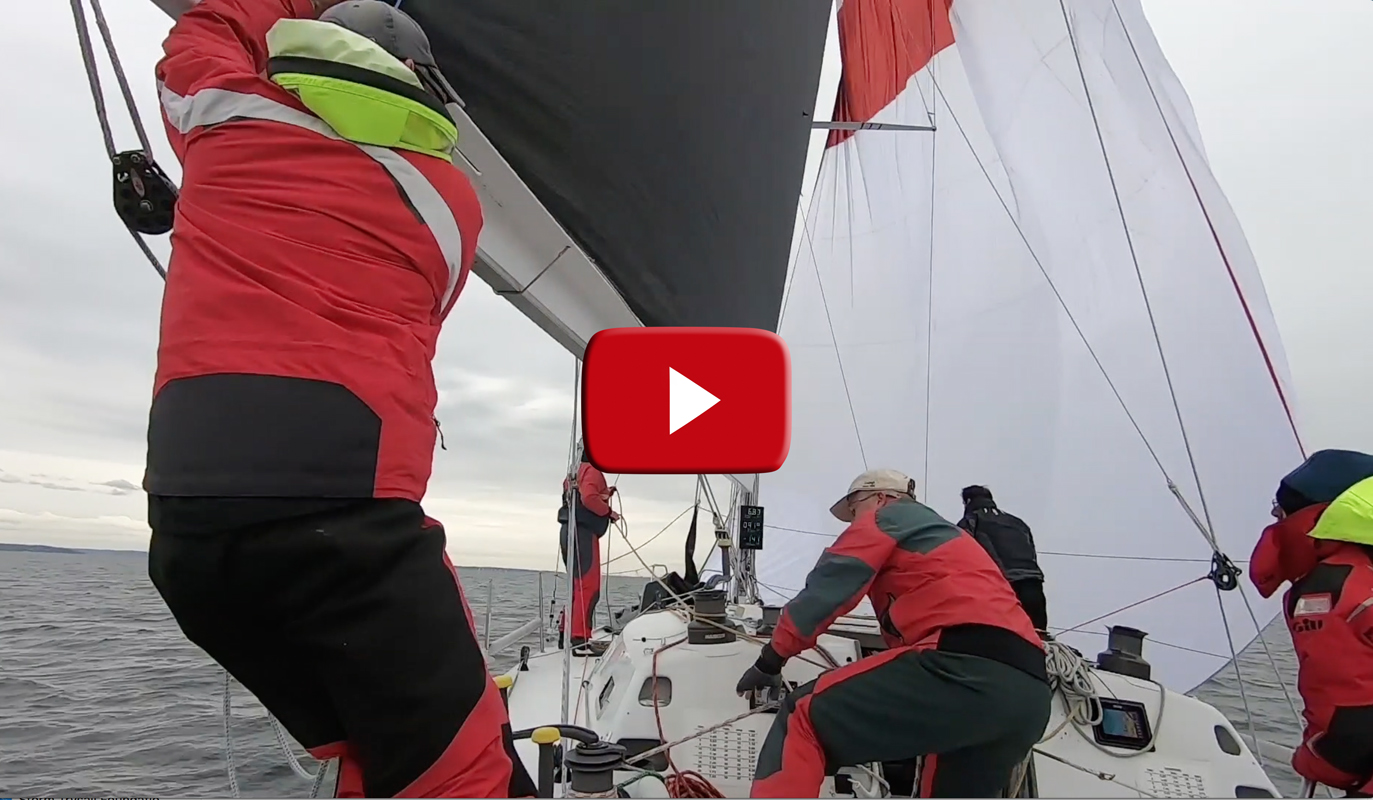This video shows two sprit boats gybing their asymmetrical spinnakers and is a good compare and contrast exercise to learn about the best way to gybe an asymmetrical spinnaker. Watch the video and listen to the commentary. The video ran on UK Sailmakers Facebook page on April 23rd and one of our Facebook followers, Long Island Sound Sailor Wes Bemus, added a lengthy but very informative and instructional comment to that post. Here’s what Wes had to share making us all a little smarter about gybing an asym.
It may be worth cautioning your readers that a premature spike can make a gybe worse if the mid-girth of the kite is not pulled most of the way through before the spike. CHECKMATE and JOSS’ bow crews were both pulling from too far forward on the boat. Once the clew reaches the midbow position on the foredeck, they’re spiking the sail before the majority of it has rotated through. This makes the gybe slower by powering up the sail area above the middle of the sail that is still on the old gybe. You’re also slowing down the overall rotation of the sail around the boat by pulling the sail down and not aft before spiking.
Good rule of thumb: anyone overhauling the sheet from ahead of the shrouds on a gybe is not improving that gybe.
What would also improve this gybe and overall sail trim would be a tighter tackline. You can see the sail falling to leeward with 6” of tack eased up in those conditions. After coming through the gybe, the sail will fall to leeward further into the mainsail’s lee and then take longer to power up and pop through with a saggy tackline slacking luff tension. If the sail wants to rotate to windward after the gybe, then it’s okay to ease it back out once the boat is at speed at its VMG angle. Another rule of thumb: even if it was working for you before the gybe, bone down the tackline before a gybe.
Also, CHECKMATE’s helm did not follow the kite through the end of the Gybe appropriately for the windspeed they were experiencing. The boat and main gybed before the kite came through and blanketed the spinnaker from filling on the new gybe. Furthermore, as the kite was loading up on port at 0:44, you see the helmsman turn down just prior to the “spike” from the female crew. Turning down depowers the sail and makes her spike take longer to have an effect on the sail. This S-turn driving is good for the traditionally windy conditions in Fremantle, but with no whitecaps and three crew on the low side, they should have been more comfortable using the wind angle pressure to pop the kite through and accelerate the boat out of the gybe. Any heel angle generated from doing so can be flattened out for more acceleration by a nice roll from the crew.
Finally, there’s nobody grinding on the new spinnaker sheet for the trimmer, which would help him get those last 3-4 feet in quicker as the helmsman turned up out of the Gybe to flip the luff through without needing a spike. Investing in an 8” handle does wonders.
Thanks, Wes. Good points made and lots to be absorbed. And, as we’ve said in previous posts, practice makes perfect and articulating boat handling best practices in this manner help us all become better sailors.
To see another video on asymmetrical spinnaker gybing, click here.

